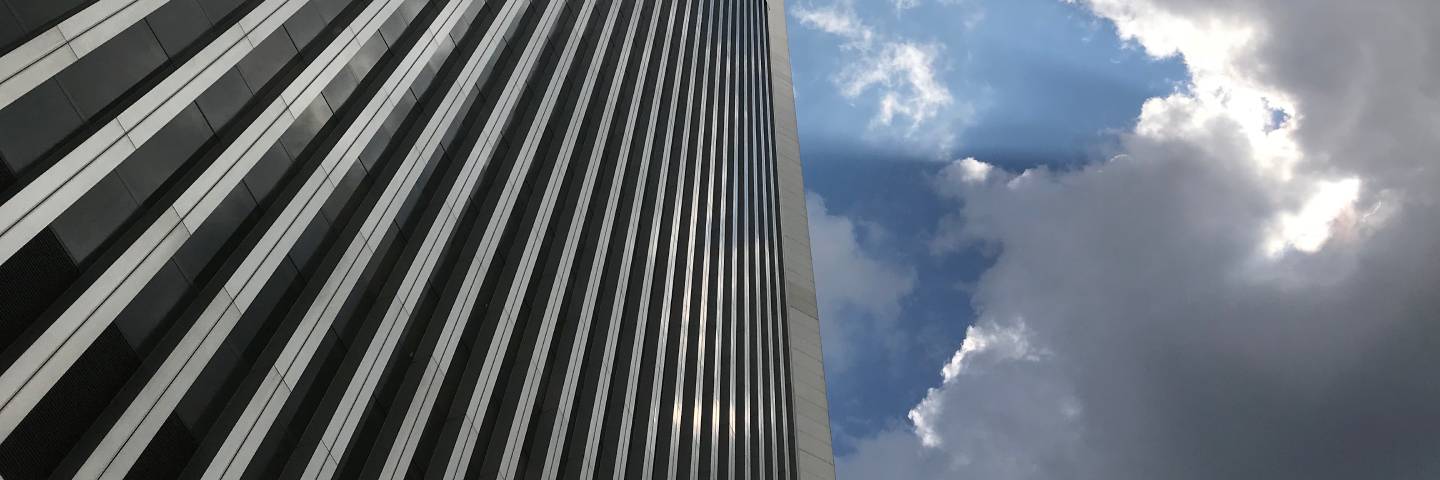
Air Barrier Basics
Air Barrier Basics: What is an Air Barrier?
A continuous air barrier system is a combination of interconnected materials, assemblies, sealed joints, and components of the building enclosure that minimize air leakage into or out of the building enclosure. Controlling the movement of air through the building enclosure can minimize the moisture carried and deposited by the air leakage. Air leakage can move inward (infiltration) or outward (exfiltration) through the building enclosure.
Pressure differences across the building enclosure are the principal force for air movement in either direction and are created by factors such as wind, inside and outside temperature differences, stack effect, and an imbalance between supply and exhaust air systems.

The air barrier system design and assembly, in relation to the building enclosure components, should address all forms of air movement, including:
- Infiltration – unconditioned, outside air flowing into the conditioned indoor spaces of a building
- Exfiltration – conditioned inside air flowing to the outside of the building
- Intrusion – intrusion occurs when conditioned air moves from the conditioned spaces of a building into the wall or roofing system, the air movement potentially bypassing insulation, which can lead to condensation and the damaging effects of mold. Technically, this is not considered air leakage, but rather unintentional air movement, as once the air enters the assembly, it loops back and re-enters the conditioned space, potentially having deposited moisture and changing temperature.

Ultimately, a high-performing air barrier system should:
- Meet permeability requirements of the structure
- Be installed continuously over the entire building enclosure
- Withstand forces and anticipated building movements, such as wind, stack effect, and mechanical ventilation
- Be compatible with other related wall and roof component systems
- Maintain its integrity and durability over the designed timeframe
What is a Water-Resistive Barrier?
The water control layer of a building enclosure includes cladding, which protects the structure from the outside against bulk water, and a code-specific, water-resistive barrier. The water-resistive barrier is positioned in the assembly between the exterior cladding and the exterior sheathing and manages water within the building enclosure.
The barrier resists water that leaks, penetrates, or seeps past the exterior cladding, and provides a space for moisture evaporation, along with a protective mechanism to prevent moisture from infiltrating to the building interior. When properly installed, the water-resistive barrier is integrated with flashing and system accessories in a shingle-lap fashion to direct water away from the structure and manage water within the building envelope.
The proper performance of water-resistive barriers depends on the correct, continuous configuration of details, particularly at interfaces such as those between the roofing and walls.

The role of the water-resistive barrier, in order of importance, is to:
- Provide a secondary layer or rainwater protection for water that passes through the primary layers of rainwater protection, such as cladding or veneer. In order to provide this protection, it is important the material itself is not affected by water, is resistant to leaks due to penetrations (self-sealing at fasteners), and can be detailed with through-wall flashing so it may evacuate accumulated water from the interior of the assembly.
- Provide either resistance or permeability to water vapor, depending on the design requirements of the barrier.

Controlling water at the wall-roof interface requires:
- Continuous and properly lapped coping over the roof and walls to keep bulk water from seeping into the building enclosure
- Correctly lapped secondary barriers (water and air) that form a continuous barrier under the coping designed to shed water, to further protect the building enclosure if coping joints fail and allow water infiltration
- Drip edges to remove the drained water away from the structure
Ready to meet with your WALLcontrol Trusted Advisor? Schedule a Meeting
Permeable vs. Impermeable Air Barriers
Air barriers, whether permeable or impermeable, play a critical role in maintaining the integrity of the building enclosure. They serve as a key line of defense against air leakage and bulk water infiltration, to help ensure the structure is energy efficient and comfortable for its occupants.
Permeable Air Barriers
Permeable air barriers are known for their ability to resist the passage of air and bulk water while permitting the diffusion of water vapor through the material.
This feature is particularly beneficial as it allows incidental moisture that has found its way into the assembly to dissipate slowly, which helps to mitigate risks of mold growth or structural degradation due to prolonged exposure to dampness. The ability to stop air and water, while allowing for incidental drying, makes permeable air barriers a flexible and favored choice among design professionals for numerous wall assemblies.
Impermeable Air Barriers
Impermeable air barriers, like their permeable counterparts, block air and bulk water. However, they allow virtually no passage of water vapor, or drying through the material as a result. Impermeable air barriers require careful design and integration with adjoining building components, such as in conjunction with the exterior continuous insulation in the wall assembly.
The entire wall assembly that utilizes an impermeable air barrier must be designed to both resist condensation from air leakage and air intrusion, as well as permit drying to prevent incidental moisture accumulation. This can be especially beneficial when wall systems are carefully designed for certain climate conditions and for specific building uses where the risk of internal moisture build-up is minimal, but external water resistance is paramount.
Choosing between these two barrier types is not a one-size-fits-all scenario. In fact, it requires a careful examination of the building's location, its intended use, and its exposure to certain weather conditions. For instance, a commercial building located in a humid climate may require a vapor-permeable air barrier to allow moisture trapped within the walls to escape in order to prevent damage. Conversely, a building wall design with primarily continuous exterior insulation may be better suited to an impermeable barrier behind the insulation.
Ready to meet with your WALLcontrol Trusted Advisor? Schedule a Meeting
